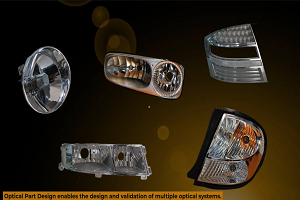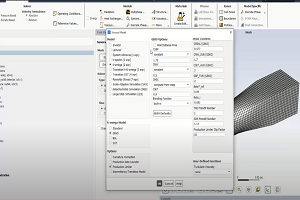- マイチャンネル
- AIS Japan - ポストプロセス
- Fluentの熱伝達係数の紹介
Tagged: 2019 R2, fluent, fluent-post-processing
-
-
January 31, 2023 at 8:53 am
 FAQParticipant
FAQParticipantFluentのポスト処理で使える熱伝達係数には以下の3種類があります。 Surface Heat Transfer Coef. Wall Adjacent Heat Transfer Coef. Wall Func. Heat Tran. Coef. それぞれを説明すると以下になります。 ・Surface Heat Transfer Coef. Reference Valueで設定できる温度を参照しているため、一様流のような一定温度の流体を考えた場合の熱伝達係数になります。 ・Wall Adjacent Heat Transfer Coef. 壁面温度と隣接セル温度で算出される熱伝達係数です。層流の場合はこの値を使います。 ・Wall Func. Heat Tran. Coef. 壁関数の算出過程で使われている式の熱伝達係数に相当する部分になります。乱流の場合はこの値を使います。 それぞれの定義は以下のオンラインマニュアルに載っています。 https://ansyshelp.ansys.com/account/secured?returnurl=/Views/Secured/corp/v193/flu_ug/flu_ug_fvdefs.html 多数の説明が載っており、情報量の多いページとなっておりますので、上記の変数名で検索してください。
-


Introducing Ansys Electronics Desktop on Ansys Cloud
The Watch & Learn video article provides an overview of cloud computing from Electronics Desktop and details the product licenses and subscriptions to ANSYS Cloud Service that are...

How to Create a Reflector for a Center High-Mounted Stop Lamp (CHMSL)
This video article demonstrates how to create a reflector for a center high-mounted stop lamp. Optical Part design in Ansys SPEOS enables the design and validation of multiple...

Introducing the GEKO Turbulence Model in Ansys Fluent
The GEKO (GEneralized K-Omega) turbulence model offers a flexible, robust, general-purpose approach to RANS turbulence modeling. Introducing 2 videos: Part 1 provides background information on the model and a...

Postprocessing on Ansys EnSight
This video demonstrates exporting data from Fluent in EnSight Case Gold format, and it reviews the basic postprocessing capabilities of EnSight.


© 2025 Copyright ANSYS, Inc. All rights reserved.

